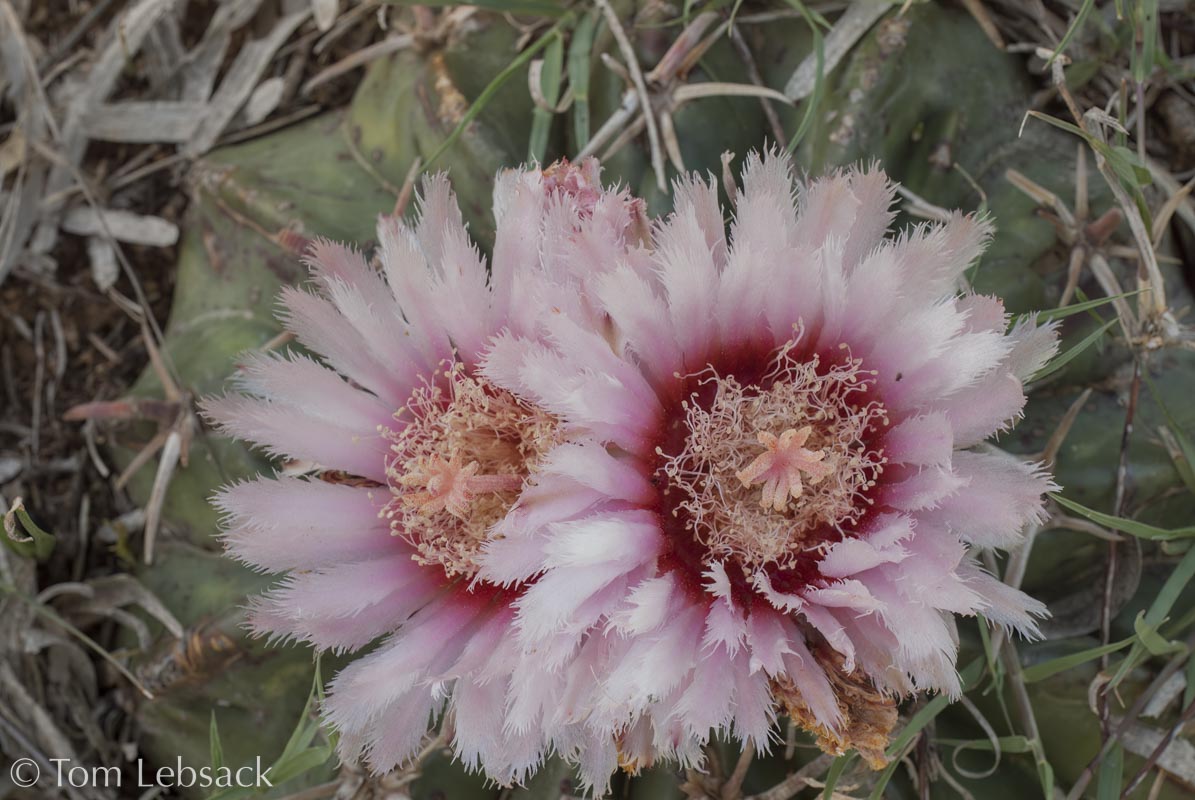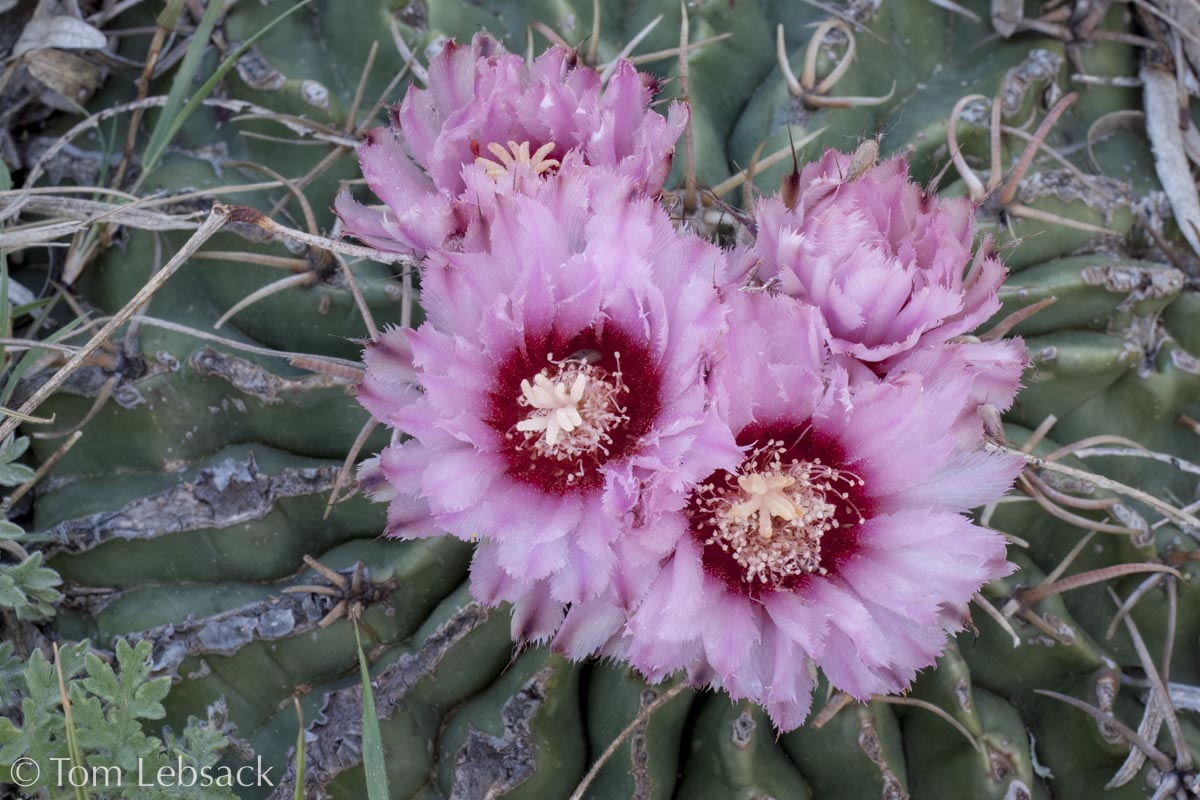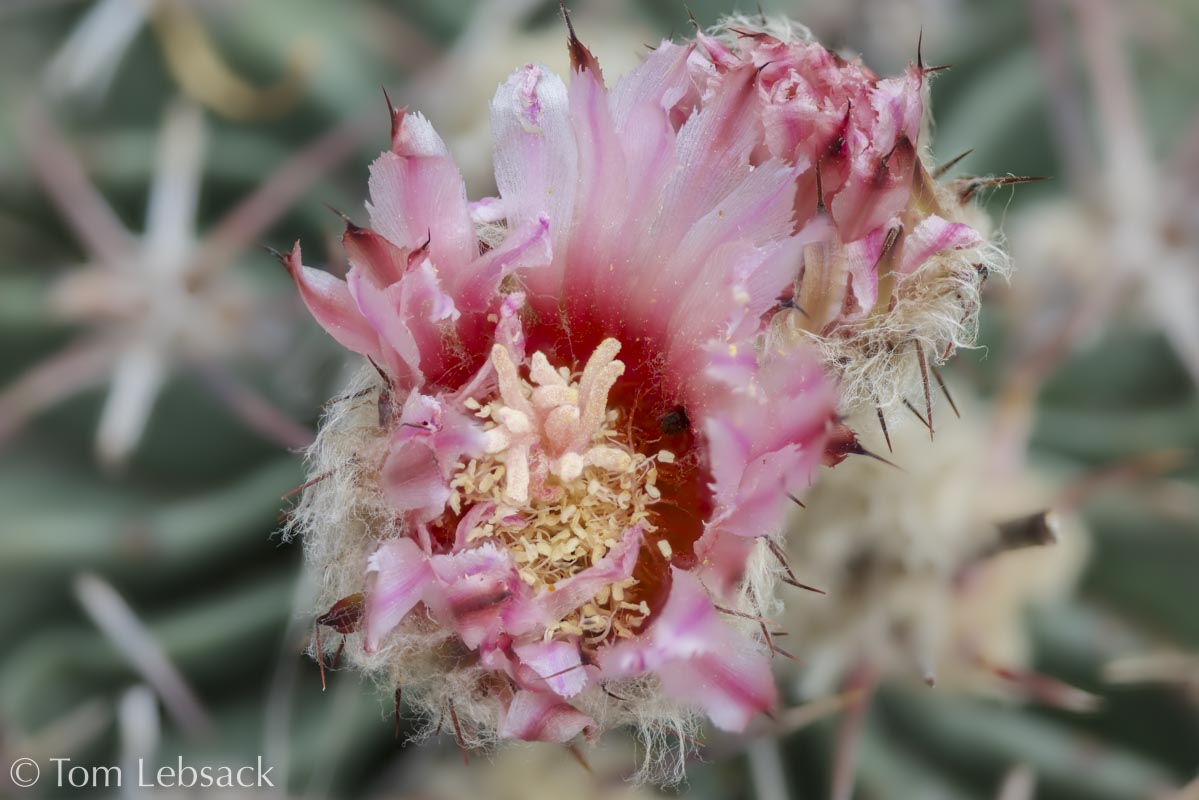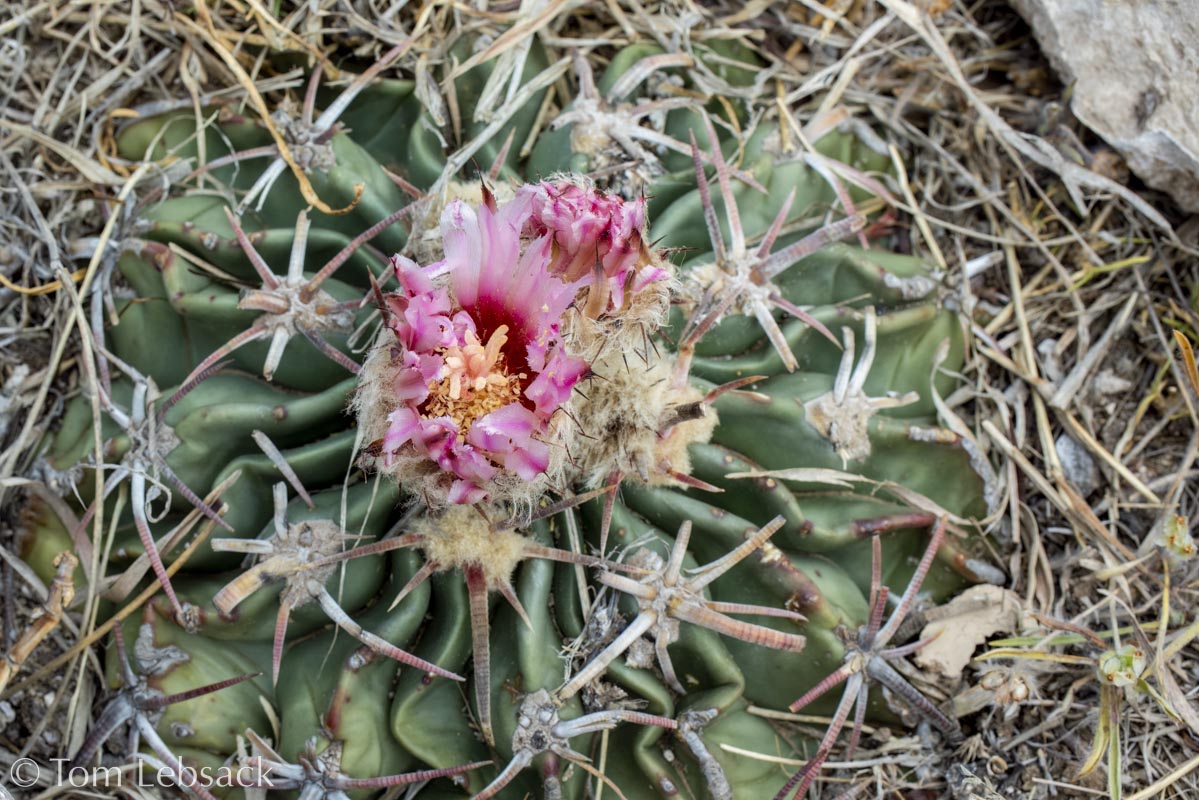Texas Wildbuds
Echinocactus texensis
(Horse Crippler)
| Scientific Name | Echinocactus texensis | USDA PLANTS Symbol | ECTE |
| Common Name | Horse Crippler | ITIS Taxonomic Serial No. | 19822 |
| Family | Cactaceae (Cactus) | SEINet Reference |
Click Here |
| Description | Habitat: Desert flats, scrublands and grasslands. Plant: Flattened, solitary stem set deep in the soil, growing less than 2 inches tall and up to 12 inches across. Pads & Spines: Stems with many (13 to 27) ribs, with long red, very stiff sharp spines that are dangerous if stepped on, hence the name; one central spine per areole 2 to 2-1/2 inches long pointing downward, and 6 or 7 straight to slightly curved radial spines. Inflorescence: Pink/violet flowers 1-1/4 to 2-3/8 inches across with reddish centers; feathery petals; opening from late morning until about noon. Bloom Period: April an May. Fruit: Red fruit with scales; ovoid to round, 5/8 to 2 inches long. References: "Manual of the Vascular Plants of Texas" by Correll and Johnston, "Cacti of Texas" by Powell, Weedin and Powell and American Southwest. |
BONAP Distribution Map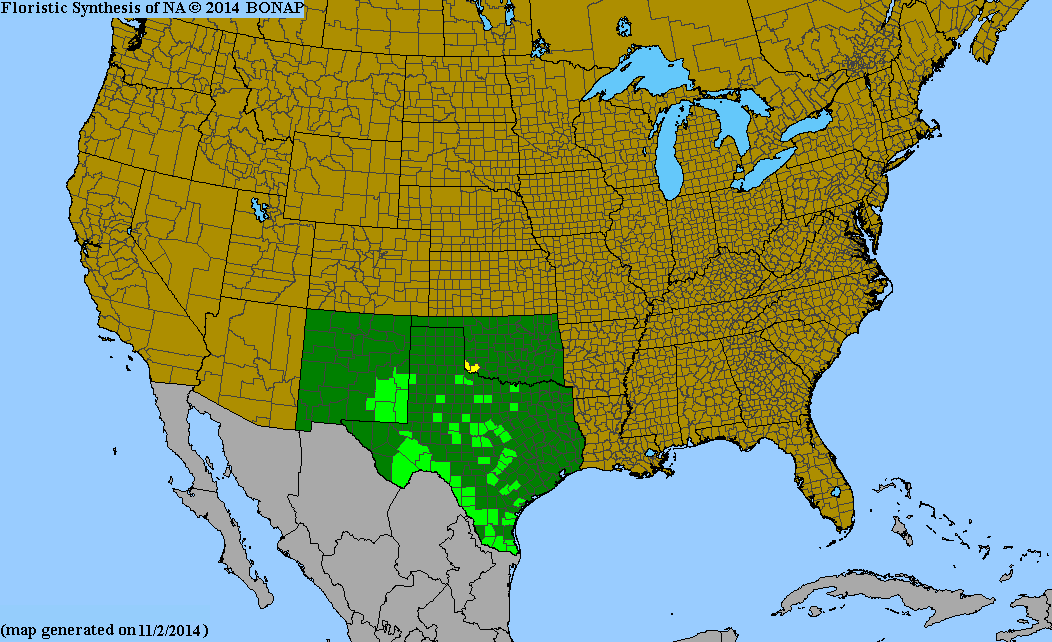 Map Color Key Map Color Key |
Texas Status: Native |
Banner photo of Castilleja indivisa and Lupinus ssp. taken along FM 1323 north of Johnson City, Blanco County
© Tom Lebsack 2025
Every attempt is made to provide accurate, up-to-date, and relevant information, but the completeness or accuracy of any information presented on this website cannot be guaranteed. I use authoritative references to insure high standards of accuracy and review and update the information frequently.
